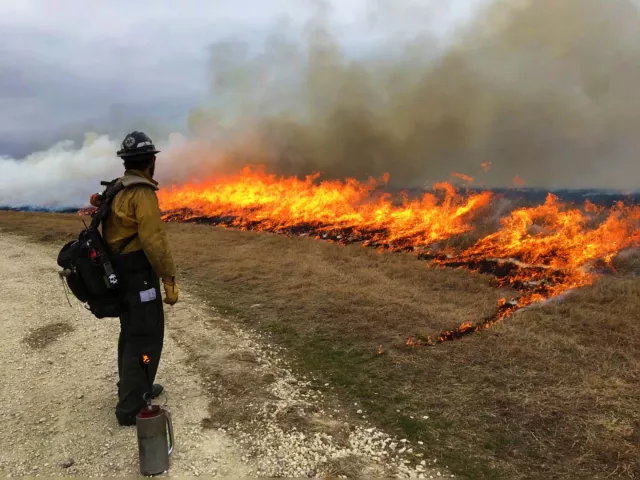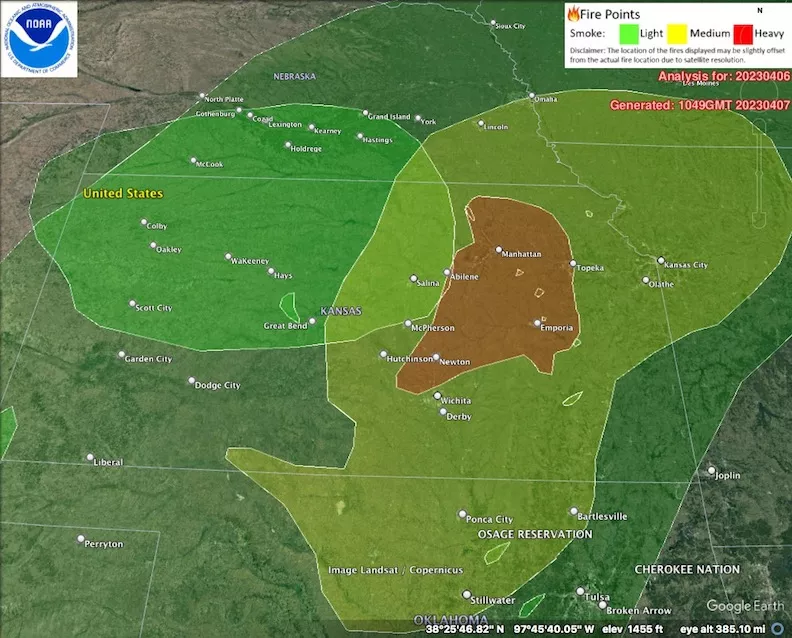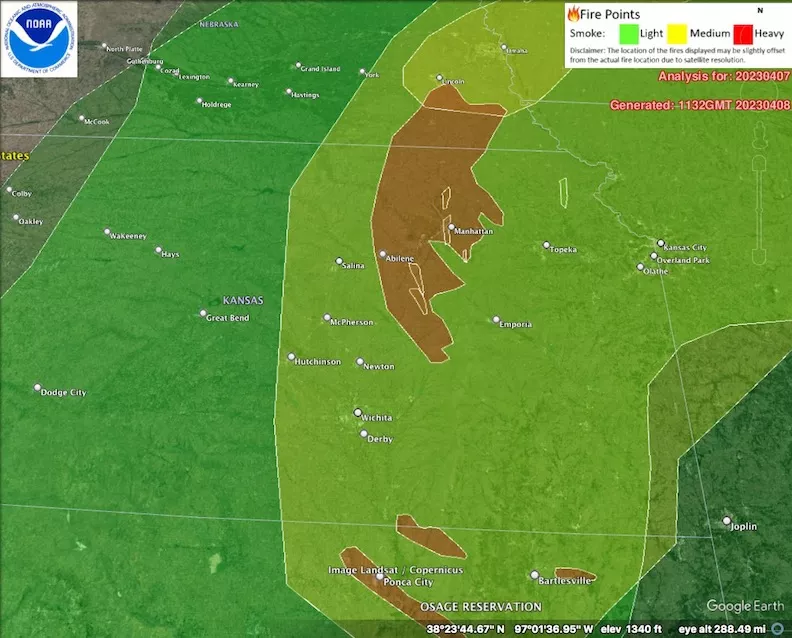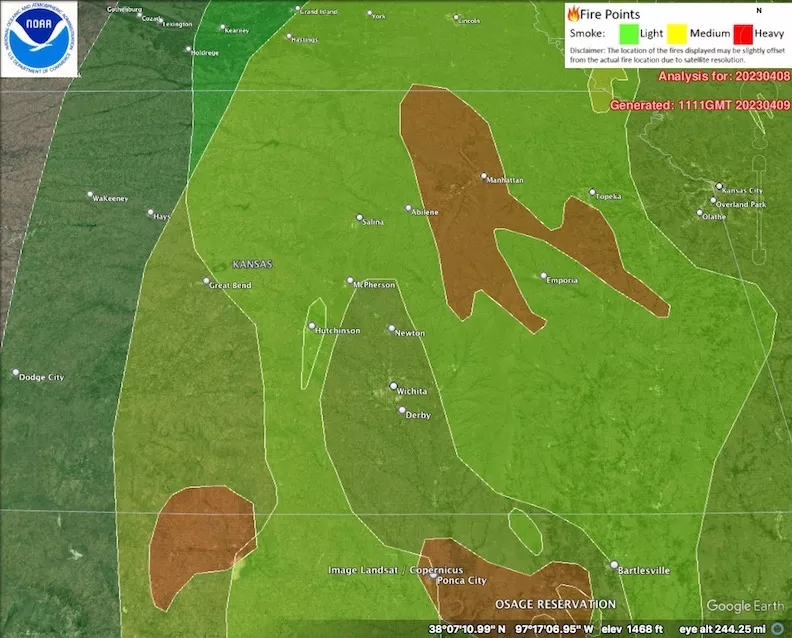
By Craig Volland, Chair, Air Quality Committee
Every year Flint Hills cattle producers conduct extensive burns to encourage fresh grass for fattening calves mostly shipped from Texas. By the end of July, they are shipped out to large cattle feedlots in western Kansas for "finishing" prior to slaughter.
During this year's spring burn period, which usually peaks from the last week of March through the third week of April, the number of acres burned was down about 33% from the historical average. In 2023, ranchers burned 1.20 million acres of grasslands, compared with an average of 2.11 million acres for every year since 2000.
This year's burn was the fewest acres since 2013 and for the same reason - drought. 2012 was a very dry year leaving little grass to burn the following spring. Likewise, the southern Flint Hills experienced extreme drought in 2022. See Figure 1.
KDHE reports that there were no exceedances of the National Ambient Air Quality Standards in the state attributable to this year's burns. However, this report is misleading because the total acres burned in the central to northern extent of the Flint Hills was at or near normal. These burns created intense smoke plumes on April 6, 7 & 8 that enveloped the City of Manhattan, home to Kansas State University. See Figures 2,3 and 4.
We don't know the extent of air pollution exposure to residents and students because there are no air quality monitors measuring fine particles and ozone between Topeka and the Cedar Bluffs background monitor near Hays in western Kansas. We have pointed this out before, and KDHE has done nothing about it. It's time.



